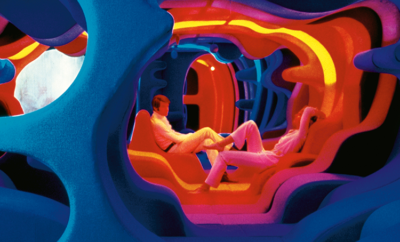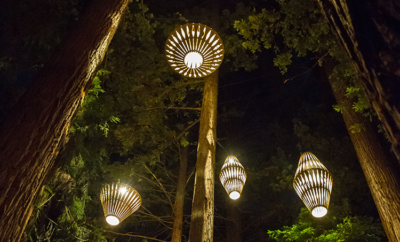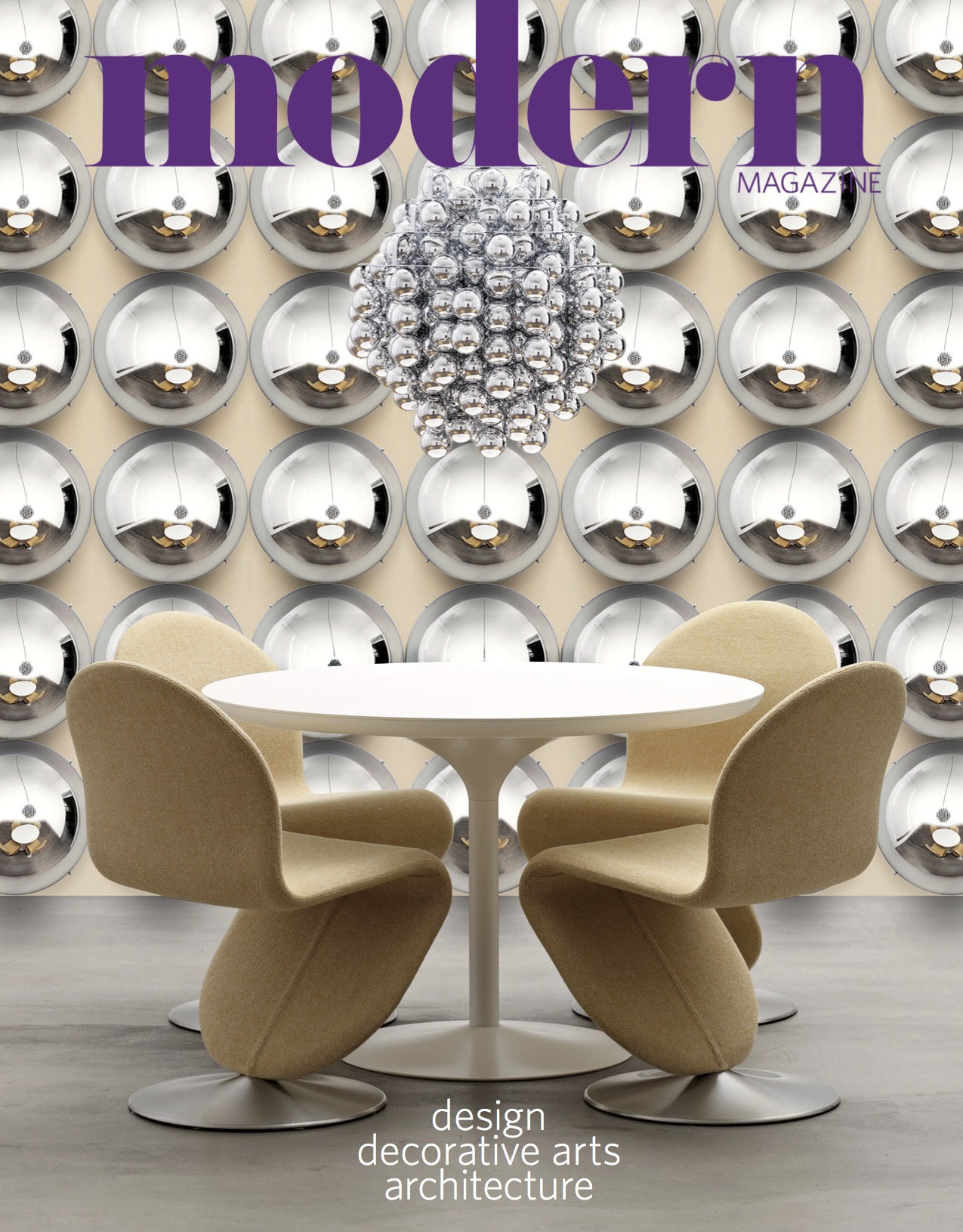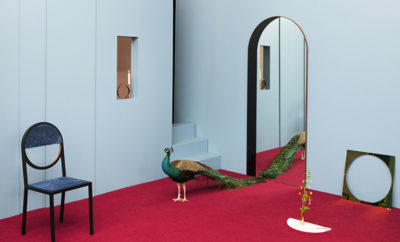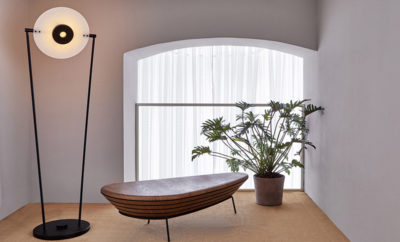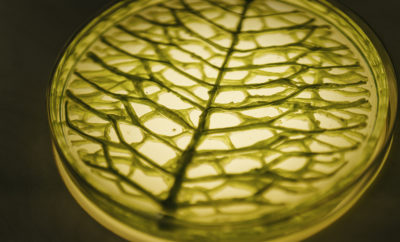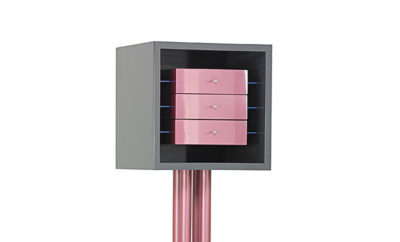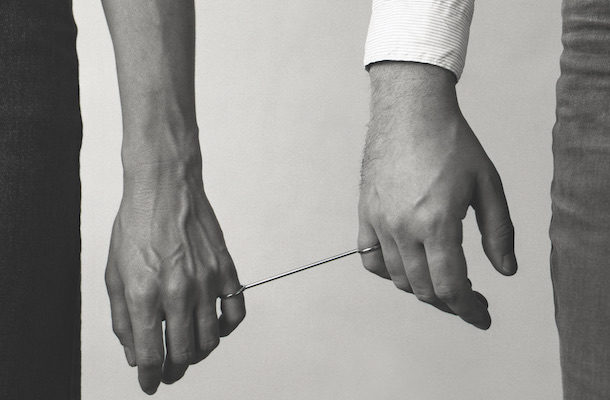 Ring für zwei Personen (Ring for Two Persons), Otto Künzli, 1980. OTTO KÜNZLI PHOTO.
Ring für zwei Personen (Ring for Two Persons), Otto Künzli, 1980. OTTO KÜNZLI PHOTO.
Feature
Two for the Show: Jewelry’s Power Couples
JEWELRY IS THE MOST INTIMATE ART FORM, characterized by a symbiotic relationship with the human body. It functions by touch, embracing one’s ears, neck, chest, wrists, and fingers. Jewelry is seductive. Not surprisingly, many jewelers fall in love with one another. In fact, some of the most notable jewelers of the past seventy years—including several of the field’s superstars—have chosen to marry. Might it be the allure associated with jewelry that attracts these artists romantically? Or simply a common aesthetic and shared passion? Whatever the reasons, making jewelry evidently makes for love. Some jewelry-making couples who cohabitate also collaborate, while others are amorous partners but create artworks autonomously. However one looks at it, the work they generate, either alone or together, would not be the same without the closeness of their relationships. Unlike contemporary jewelry couples, most of whom met in art school, mid-century modernist jewelers found their mates in distinctive ways.
Lisa Walker and Karl Fritsch

Karl Fritsch and Lisa Walker in their Wellington, New Zealand, studio, 2014. Lizzie Leckie Photo.
“We love what we’re doing and each other,” say New Zealand–based jewelers Lisa Walker and Karl Fritsch. Like Britton and Bielander, they enjoyed a duo exhibition in the couples series at Galerie Rosemarie Jäger in 2015, for which they chose the title Love and Technique, from a song by avant-garde Finnish musician-composer M. A. Numminen. Fritsch was born in Germany, Walker in New Zealand, where the couple met in 1994, when Fritsch gave a lecture in Auckland about the Academie der Bildenden Künste, München, where he had been a graduate student. Walker, who had studied craft and design at Otago Polytechnic’s school of art in Dunedin, was so inspired she enrolled at the Academie der Bildenden Künste in 1995, studying there for six years under Otto Künzli. Walker and Fritsch married in 1999, and moved from Munich to Wellington, New Zealand, in 2010, where they share a home with their two children, Max and Mia. They converted an adjacent house into separate studios where they both work, “protected from the outside world and each other.”
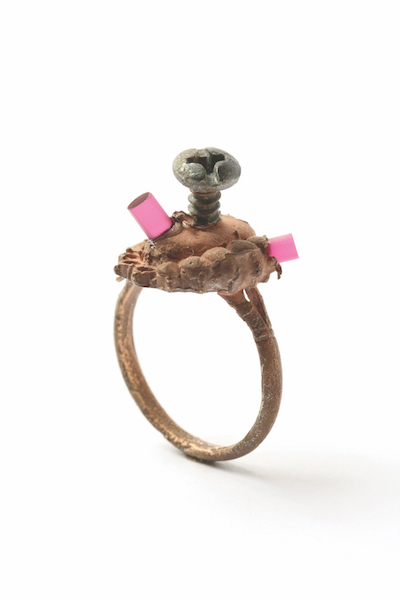
Ring by Karl Fritsch, 2010. Gold, steel, and spinel. Courtesy Ornamentum.
Although they converse about art, jewelry, and exhibitions, Walker and Fritsch don’t normally talk to each other about their practices. In fact, Walker says she sometimes sees Fritsch’s pieces for the first time at shows. Although they are both considered “jewelry anarchists,” their work is substantially different. Fritsch concentrates on precious metal and gemstone rings that subvert his traditional goldsmith’s training in favor of satirically affectionate statements about the aesthetic possibilities offered by this small, personal item owned in some form by almost everyone. Walker, on the other hand, uses huge necklaces and brooches made of anything from cellphones to eggbeaters to critique commonly held assumptions about adornment, value, beauty, self-image, and appropriation. Although Fritsch has utilized New Zealand’s indigenous stones, and Walker has been inspired by Kiwiana, their respective visions are global. Nonetheless, a shared experience will occasionally trigger a piece by each, such as when they came upon a pumpkin at their daughter’s school, into which someone had carved a phallus. Walker is careful to note that her jewel embodies a feminist perspective, while Fritsch’s is decidedly male!

Brooch by Lisa Walker, 2006. Plastic, acrylic paint, silver.
There are many other noteworthy couples working in jewelry today, such as Germans Norman Weber and Christiane Förster, Georg Dobler and Margit Jäschke, and Bettina Dittlmann and Michael Jank; Italians Annamaria Zanella and Renzo Pasquale; Israel-born Attai Chen and his German-Iranian partner, Carina Shoshtary; and Stockholm-based Adam Grinovich and Annika Pettersson, and Beatrice Brovia and Nicolas Cheng. Brovia and Cheng, like the others, maintain separate practices, but since 2011 have collaborated on a joint project that focuses on interdisciplinary material research and craft discourse through installations, objects, and jewelry. All in all, whether by a common intellect and aesthetic sensibility, compatible theoretical bent, physical attraction, or simply the mystery of love, one fact is certain: couples who make jewelry turn each other on.
Toni Greenbaum is an art historian specializing in twentieth- and twenty-first-century jewelry and metalwork.
This article has been updated to correct two errors that appeared in our Summer print issue: the proper photograph is shown with the discussion of Sam and Carol Kramer; and the caption to the image of Gijs Bakker and Emmy van Leersum’s Clothing Suggestions has been corrected.



